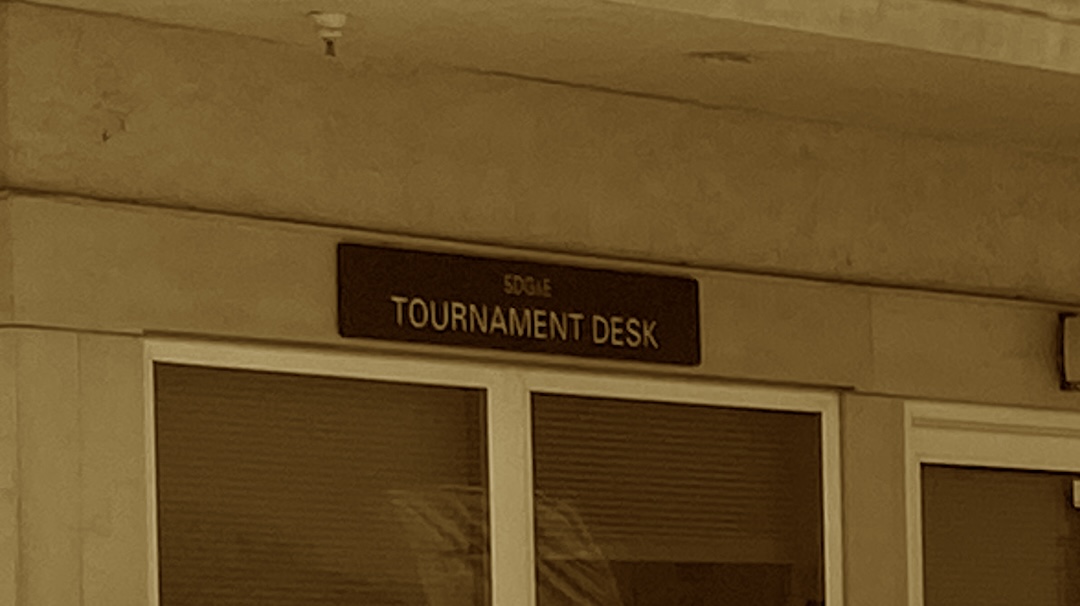Fiend at Court Unplugged
Last Sunday in “Geography Lessons from USTA Texas,” we learned a lot about a Texas section specific rule that was implemented to foster and encourage local league play. Specifically, we learned that the Texas Section office has residency requirements limiting the number of players that can reside outside a 50 mile radius from the center of a city.
Additionally, we learned that the Texas Section has designated 5 cities as “large” which have slightly different restrictions on out of area players than other municipalities. As a quick refresher, here is the complete text of the rule from the Texas section league operating procedures.
A team may have only one player from outside the 50 mile radius of the center of a large city, Fort Worth, Dallas, San Antonio, Austin and Houston. Teams from all other cities can have a maximum of two players from outside the 50 mile radius of the center of the city. If a player does not have the specific league in one of our designated areas, (i.e. Abilene, Amarillo, Austin), he/she can play in another city without it counting as part of the out of city maximum.
2020 Operating Procedures USTA Texas Section Tennis Leagues, Item #13.
Just in case not everyone is up to speed on Texas geography, Dallas and Fort Worth are so close together that they are generally referred to by the singular term “DFW.” In fact, that is typically the answer I provide when questioned about what part of Texas I live in. Sometimes this area is also called the metroplex, a fact that I mention only because it gives me an excuse to reference a fun Texas Monthly article on the origins of that term.
In “Geography Lessons from USTA Texas,” we learned the secret locations of the center of each of the five large cities in Texas as officially designated by USTA Texas Section office. This makes it possible to draw those circles on a map with a high degree of precision. As a player in the DFW area, I have always been very curious about what that map actually looks like.
(Editorial note: Online readers will see the map at both the top and the bottom of this post. My email only subscribers will only see the image at the bottom of their daily email. I was struggling to find language to refer to the picture for both types of reading experience and eventually just gave up. Yo- there is a map associated with this post that you probably want to take a gander at. Scroll up and/or down to find it.)
I used Google maps because we now know it is the designated tool for measuring distance by the USTA Texas section office. A pin was dropped on The Flying Saucer in Fort Worth and another on Dallas City Hall, which are the respective center points of each city. I then used the Google maps “measure distance” tool to find a point that was 50 miles away from each of those city centers and dropped a pin at those locations.
Additionally, just for fun, I measured the distance between the pins dropped on the city centers of Dallas and Fort Worth. It is 31.1 miles. I complain every time math is required in association with this site, but the geometry is easy in this case. Two circles with a 50 mile radius and center points that are 31.1 miles apart will have a lot of overlap.
I exported the Google map that I created to PowerPoint to superimpose the respective circles on the map. The results were exactly as predicted. There is a lot overlap. In fact, Fort Worth is entirely within the Dallas circle and Dallas is entirely within the Fort Worth circle.
From a tennis league perspective, this means that the vast majority of tennis players in the metroplex are considered to be local players for league play in both Dallas and Fort Worth. There are some exceptions to that general statement, and I am sure that we will touch on that in due time.
But first, I really need to extol the virtues and many benefits of living on the large border between two large and thriving tennis communities. I live in a veritable tennis hotbed which is a direct result of a delicate ecosystem that made it all possible.
- 2020 Operating Procedures USTA Texas Section Tennis Leagues, https://www.usta.com/content/dam/usta/sections/texas/pdf/2020_League_Operating_Procedures.pdf
- Don’t Call It the Metroplex: The nomenclature of the area known as Dallas–Fort Worth, Texas Monthly, February 2013.




